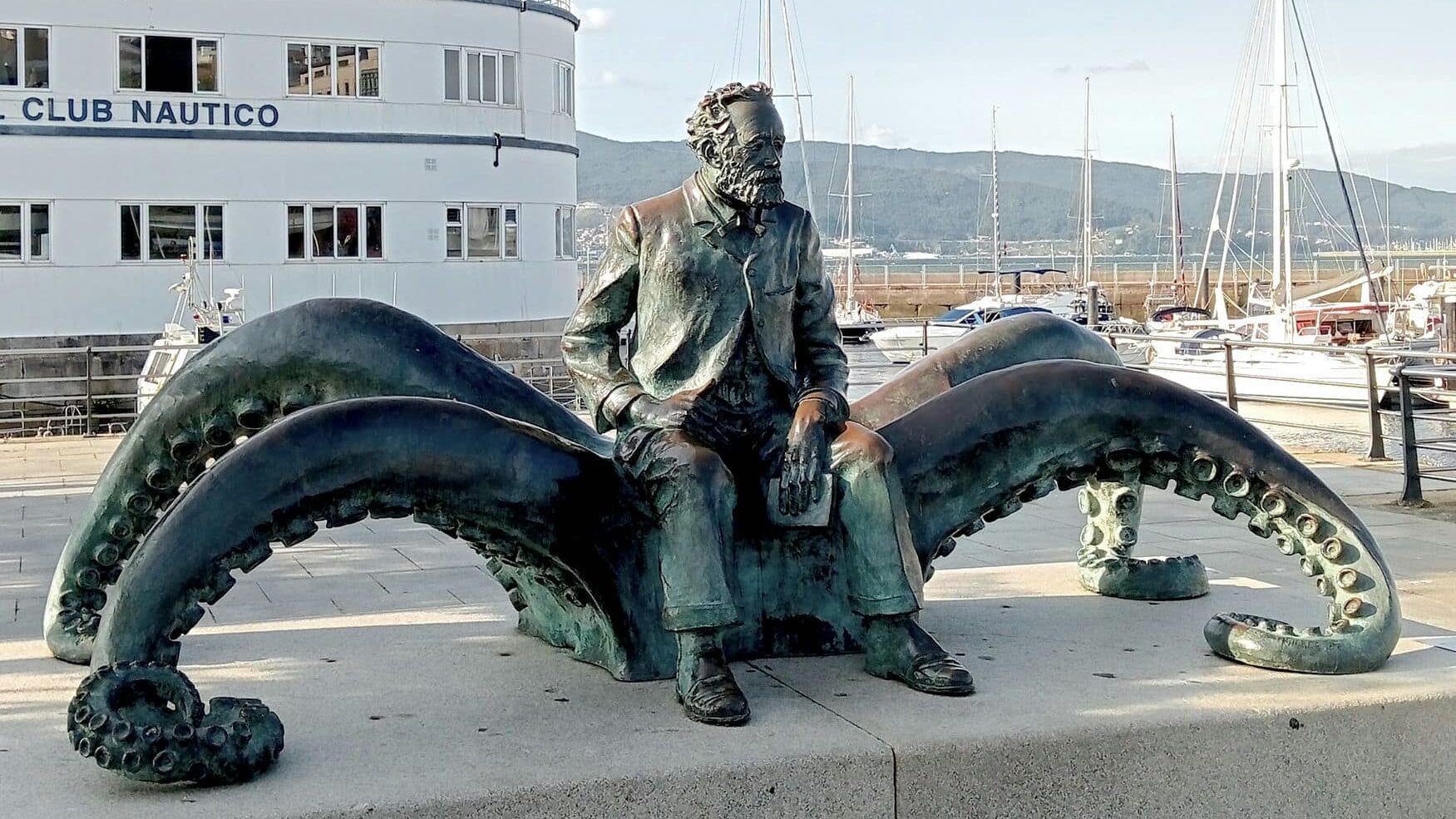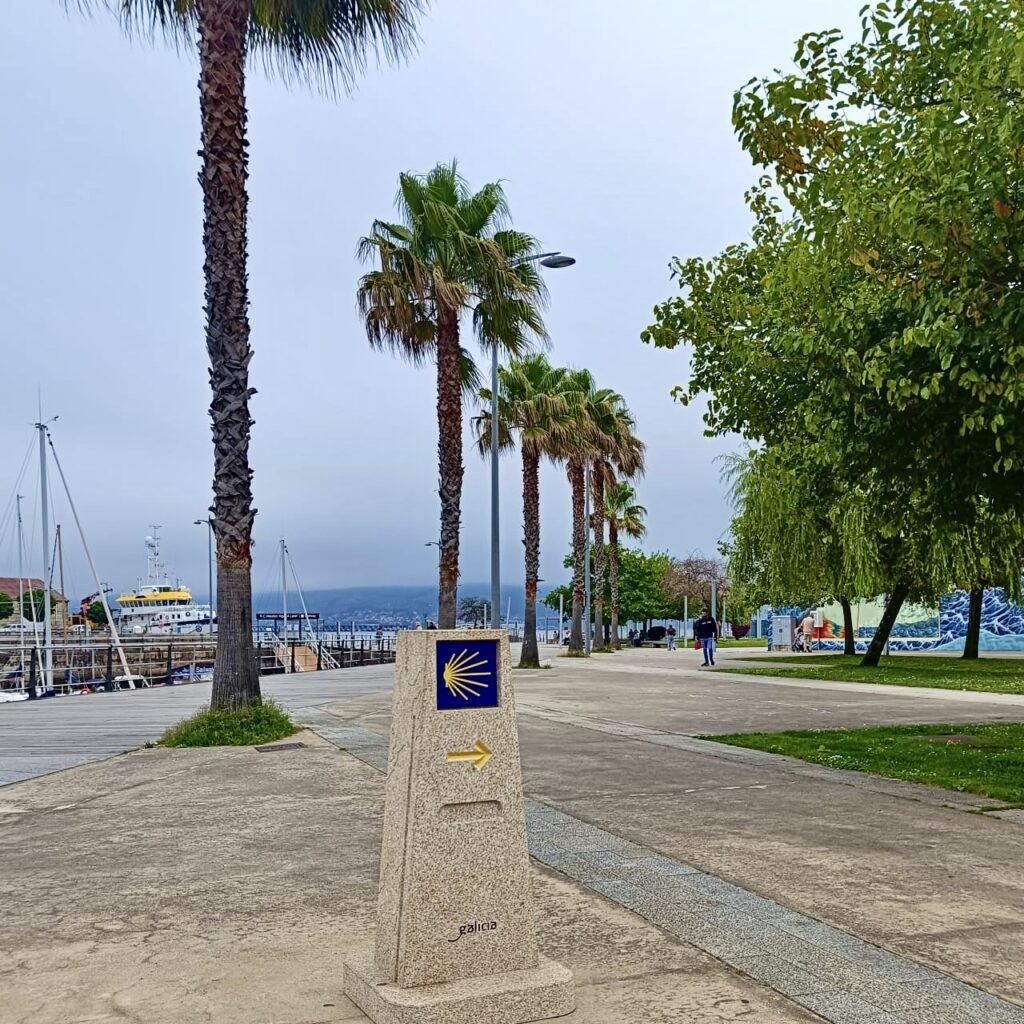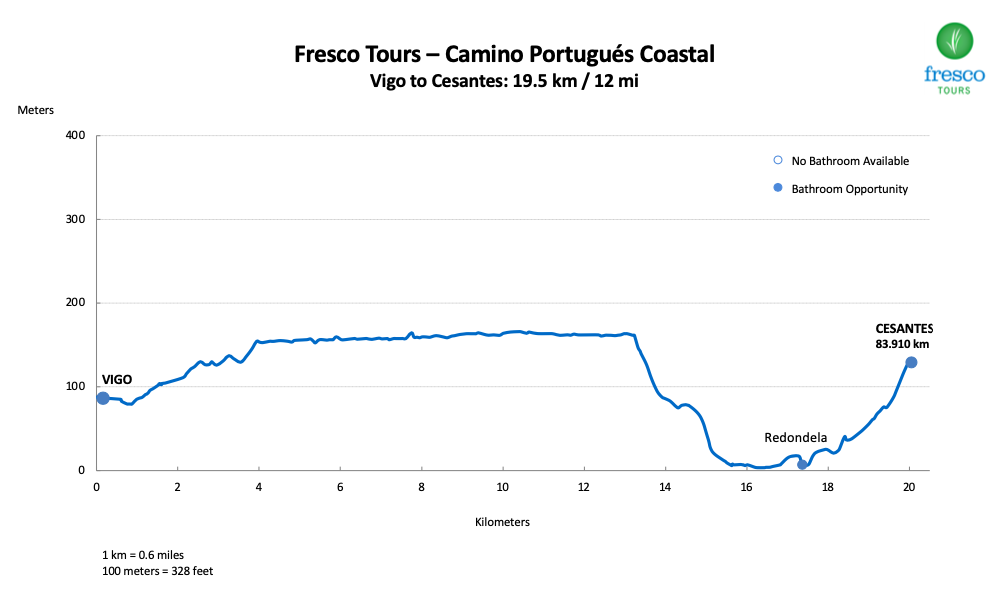After a good night’s rest in Vigo, we get a stamp at the Church of Santiago and leave town. Today we walk from Vigo to Cesantes. Our walk today takes us inland along the Vigo Estuary. We will gradually leave the Atlantic ocean behind as we make our way towards Redondela, where the coastal route meets the interior route.
The Vigo Estuary
The Vigo Estuary is also known as the Ría de Vigo in the Galician language. This is a picturesque estuarine inlet located in the Rías Baixas region of Galicia. Stretching approximately 35 kilometers in length, it is the southernmost of the Rías Baixas. The inlet itself is one of the major producers of mussels in Spain.

Jules Verne and the Vigo Estuary
What does Jules Verne, the Portuguese Camino and the Spanish Secession War have in common?
In 1702 an important naval battle was fought in the Vigo estuary. A painful defeat was inflicted on the Franco-Spanish fleet, which was completely destroyed. The cargo of silver that was on the Spanish ships sunk to the bottom of the estuary. A hundred and seventy years later Jules Verne would use this event to explain how Captain Nemo finances his operations. Nemo would pillage the sunken wrecks in his novel Twenty Thousand Leagues Under the Sea.
There is a wonderful monument to Jules Verne featuring Captain Nemo and two divers just off the Island of San Simón in the estaury. There is also a monument to Jules Verne sitting on a large octopus in Vigo.

Vigo
Vigo is a bustling city in the heart of Galicia. It is also the starting point for pilgrims on the Coastal Camino Portugués who can only walk the last mandatory 100 kilometres. Nestled along the Vigo Estuary, this vibrant urban center is the largest city in Galicia, boasting a lively atmosphere and a deep connection to its maritime heritage. Vigo’s old town, or Casco Vello, is a maze of narrow, winding streets lined with historic buildings that showcase traditional Galician architecture. This area is perfect for leisurely strolls and tapas!
Beyond its cultural and religious landmarks, Vigo’s culinary scene is another highlight. The city is renowned for its seafood, particularly its fresh shellfish and pulpo a la feira (Galician-style octopus). Dining in Vigo is an experience in itself and the lively Mercado da Pedra in the historic quarter is a great spot to sample these culinary delights.
Vigo is also a significant waypoint on the Portuguese Coastal Way of the Camino de Santiago. Whether you are passing through or starting here, a visit to the Church of Santiago in town is warranted. A visit to the Basilica of Santa María in the Casco Vello is another essential stop along your pilgrimage.







